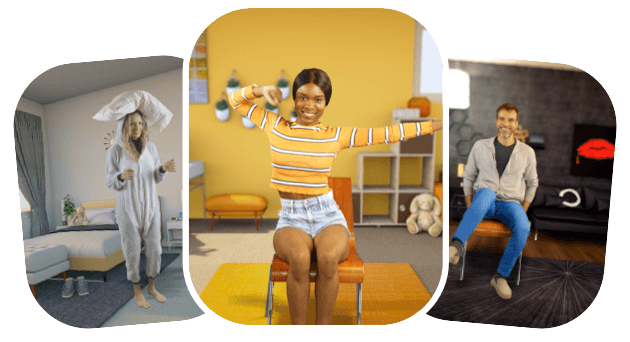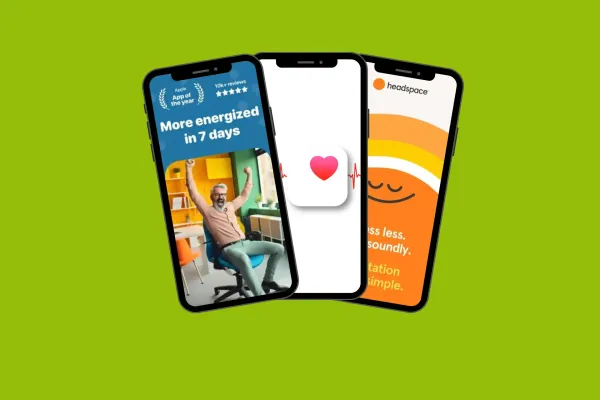Pandemic Vs. Public Health Crisis
There’s a good chance you know that being sedentary can lead to health issues. You don’t take it lightly. But, you’re sure not ready to torturously read another gloom and doom scare article.
Well, this one is serious (here and there). At Wakeout we’re more interested in making you smile! That makes reading about health easier to swallow and does a better job of grabbing attention. Are you ready? Super!
-First, we’ll go through a few snippets about pandemics.
-We’ll then consider if sedentary work is a pandemic or something else.
Pandemic 101
The COVID-19 pandemic has had most of the world on edge since 2020. A pandemic is defined as “Occurring over a wide geographic area…and affecting a significant proportion of the population.” Merriam-Webster, 2022
An influenza outbreak over a wide area of a country is a pandemic. Another is when widespread illness is unleashed by a virus that hasn’t been around for ages. Few people have immunity to one of those as it spreads like wildfire. Scary stuff. Pandemics over the last four decades include HIV since 1981, SARS in 2002, H1N1 in 2009, Ebola in 2013, and SARS-2 that’s been ongoing since 2019. All of these were caused by a nasty ‘agent’ passing from person to person.
That leads to this question: Is there a general term for all the health woes caused by sedentary behavior? You know, all the sitting and hanging out at home that blew up with COVID-19.
Being sedentary contributes to physical, cognitive, and emotional problems. The World Health Organization (WHO) issued a warning about physical inactivity (PA) back in 2002! Gee whiz, where does that leave us today? Yup, sitting there, scratching your head and wondering how to balance remote work with increased activity. We’ll get to that after sharing the dastardly downsides of not having enough PA.
Dangers of Sedentary Lifestyle: The New Public Crisis
Let’s be kindly candid. The cheery job of this article is to share what can happen when we’re consistently sedentary. The WHO defines being sedentary in metabolic terms. Let’s boil it down to what the organization describes as sedentary behaviour. It means doing things that use little energy, such as working at a desk or watching TV instead of doing pre-bed movements; reclining on your favorite couch, bed, or patio lounge chair; and screen time, as in what’s going on as you read our words of wisdom.
“Physical inactivity for adults is defined as not participating in any leisure-time physical activities over the last month – activities such as running, walking for exercise, or gardening.” Centers For Disease Control and Prevention, 2020
The Crux of the Matter: Sitting Around Too Much
Prepping this article meant writing in front of a screen. More and more people work remotely, usually at home. Bottom line is that when on a roll, new ideas come on like a flash flood, who has the urge to go out for a jaunt?
Sedentary Lifestyle Causes: How Did It Happen?
The short response is: Advances and human ingenuity. Yes, we’re upright, and have lots of dexterity, and are so easily distracted. We’re consistently compelled to move evolution and innovation along.
A Quick Overview of Human Work History
Humans lived in hunting and foraging societies for millenia. These were followed by agricultural communities, after which came industrialization in many regions. We’re now into the rapidly expanding tech era. Just think about that for a moment. In a span of years, a whole lot of humanity went from toiling in fields for hours on end to working in factories and mills for long, adruous hours, and then to sitting in front of a screen to work or be entertained.
The (Wealth+Convenience+Comfort = Sedentary Behavior) Equation
We humans are creative, imaginative creatures. We devise marvelous adventures for ourselves and excel at coming up with a wide range of comforts. Oh, the joy of using them! There are people with goobs of financial wealth who immerse themselves in convenience and comfort. Yet, there are others who have chosen a different type of investment. They focus on their health. Now it’s time to read the serious stuff.
Physical Activity, Sedentary Jobs And Health Risks
That old adage of ‘health is wealth’ says a lot. Sedentary behavior across the lifespan contributes to the reduced ability of the circulatory and respiratory systems to function well. It results in changes that limit musculoskeletal structure-function. All of these happen on top of the regular growing old stuff.
Various studies have shown that sedentary behavior puts a person at risk for one or more of 35 chronic conditions and shortened life span. Plus, spurts of exercise may not be protective when someone is quite sedentary for an extended period.
That means someone who’s sitting away their vigor for far too long puts their cardiovascular health at risk, and is more prone to diabetes. They’re also at risk for being overweight, obese, having back problems, or developing musculoskeletal conditions such as various forms of arthritis. They also may become depressed and/or have anxiety and burnout. Other concerns of being sedentary are some cancers, such as those of the breast and colon.
Our readers especially report feeling back pain due to excessive sitting.
The Working-From-Home Worry
Late in 2020, The Stanford University Center for Longevity Studies conducted a survey that resulted in: From Bad to Worse: The Impact of Work-From-Home on Sedentary Behaviors. This brief shares lots of less-than-cheery info.
The study revealed a dramatic decrease in physical activity between 1988 and 2010, long before the pandemic. That in itself is worth noting. When the researchers surveyed a bunch of Americans, aged 25-74, who were working from home, they learned that these people sat about 2 hours more per day than those who didn’t. That’s a lot of extra sitting!
Added to that, a review of other studies reported that those working remotely from home are more fatigued, isolated, and anxious than their peers who go to a workplace. None of this touches on the human costs associated with suffering. There’s no way to put that lightly. Along with the human costs, there are the financial ones associated with chronic health conditions. Those affect individuals, families, communities, and systems.
Remember, more studies are needed. That’s because the work-from-home wave is new. Along with that, workers and employers are looking for ways to turn the tide on sedentary behavior. Two ways to do that are to have hope and learn about Wakeout.
There’s Hope!
Although short simple exercise/fitness programs offer obvious benefits and are in tune with physical activity guidelines, there’s more study needed. Most research done so far can be found on Sedentary Behavior Research Network.
This includes the emerging needs of remote workers with home offices. There are special keys to success, such as a person’s motivation and belief in their ability to stick with an exercise routine. Tracking success with ongoing monitoring, including the use of a device that measures activity, is encouraging for exercisers. You and others will feel good by tracking what works for you and the improvements you’re gaining.
Wakeout: Kick the Sedentary Habit to the Curb!
Our mission is to make a health unsplash - to get you to reap the benefits of physicalactivity breaks . Yup, they’re spirited and can be done right at home. Heck, your kids or pets can join in. Everyone smiles! You light up energetically. Now’s the time to invest precious moments into building new habits and in your physical and mental health. Think of it this way. You can switch out your past commute time for exercise breaks, or swap that hour at the gym for some fun midday sessions. You’ll have a good chuckle while doing squats or spinning in your chair, then getting back to work, refreshed and raring to go!
Check out our Exercise Breaks section to try a few out.
Wakeout










